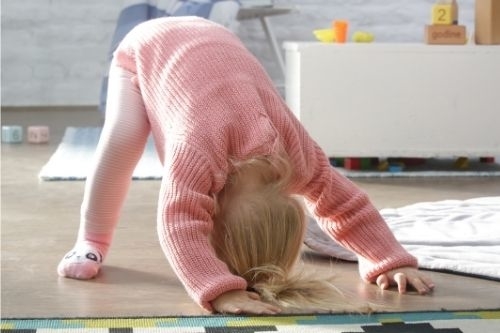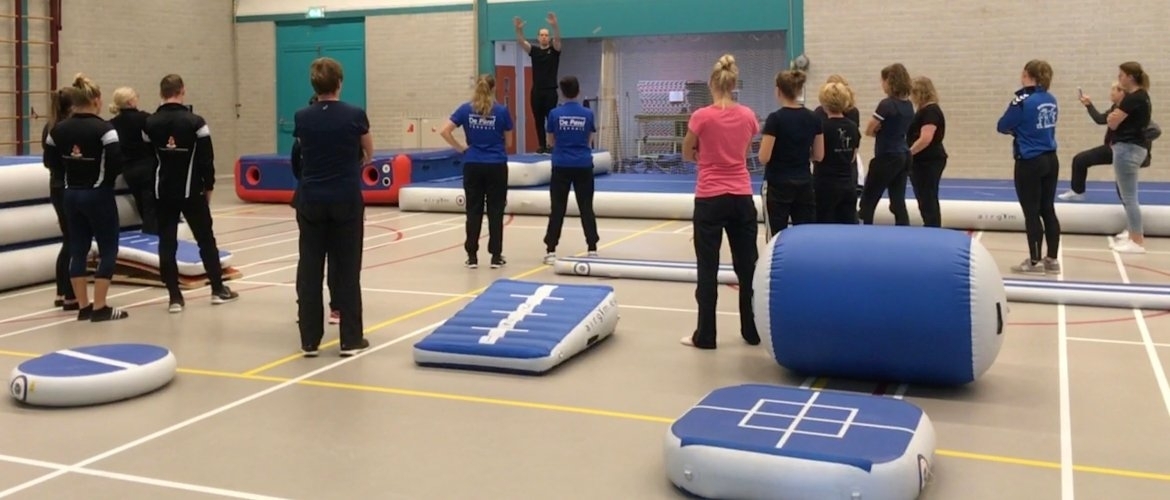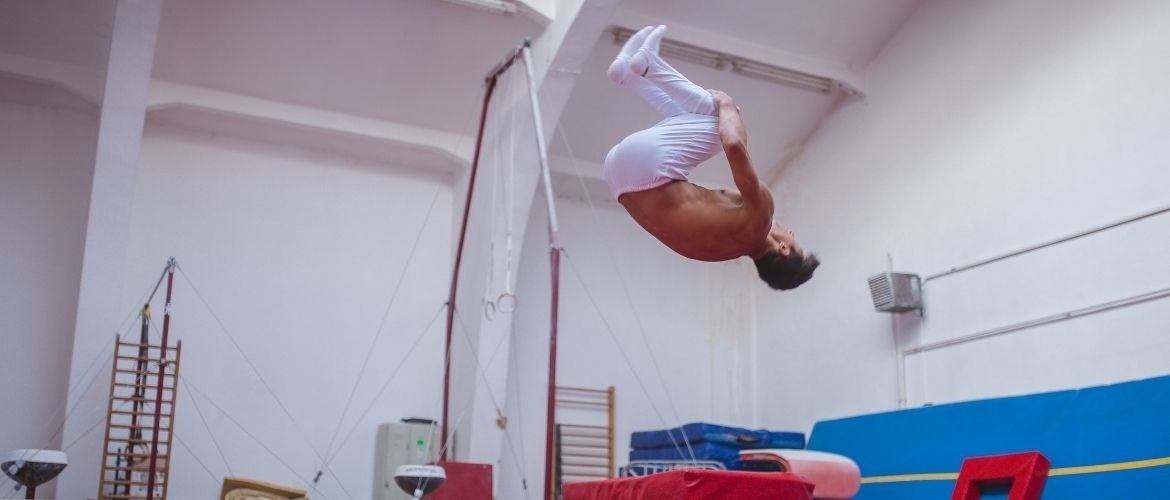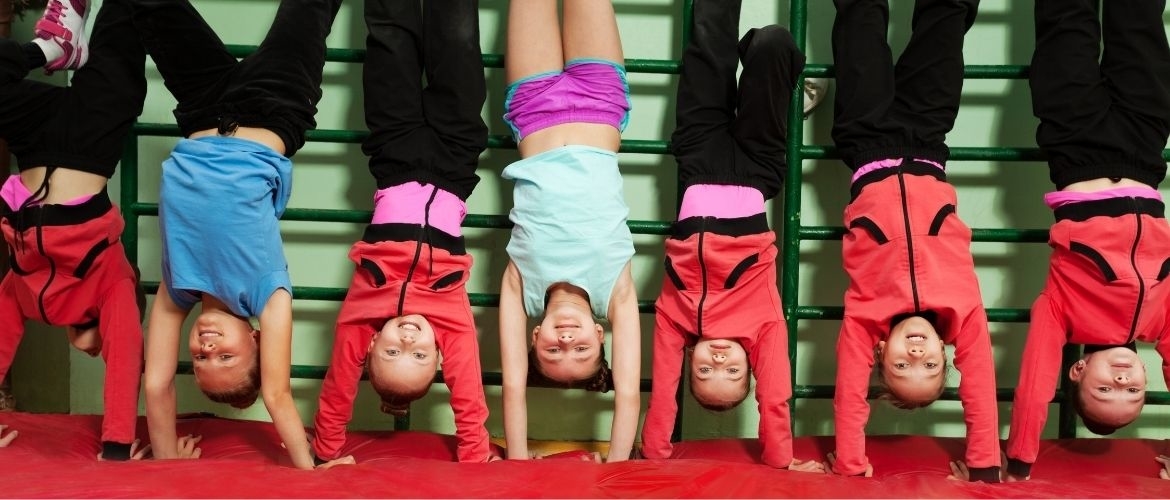When you think of toddlers, you think of rolling. Rolling over a mat, on a sloping surface, rolling like a pancake, rolling like a pencil, and of course the real somersault! For some pre-schoolers it is a piece of cake, for others it can take forever to master rolling. In this article you will find methodical steps that will help to teach your toddler how to somersault.
The Definition of The Somersault
First of all, we will explain what a somersault is. In a correctly executed somersault, the head makes little or no contact with the ground or mat. Because you have to keep your chin on your chest, only the back of your head, or actually your neck, comes into contact with the ground.
Although a somersault looks relatively simple, making a technically good rollover is still quite tricky. Especially young children, whose heads are still very large in relation to the rest to their bodies, have difficulty making a good somersault. It is therefore very important to start with methodical rollover exercises for young children. While doing these exercises, it is important that they do not only roll over the width but also over the length of their body. In this way, the rolling is practiced optimally and it becomes a recognizable movement for the children.

To Rotate around The Longitudinal Axis
It is a good idea to start with rolling exercises with the toddlers that rotate around the longitudinal axis. In gymnastics, we often call such a roll a ‘pencil roll’ or ‘pancake roll’.
On a sloping surface, you roll like a pancake, i.e. over your side, from top to bottom. You stick your palms together above your head and you also keep your feet together. In this way, the toddler already learns what it feels like to roll, but does not have to do it upside down yet. Make sure the children roll downwards in both directions. Moving both ways is very important for motor development at this age.
If children find it scary to roll down a sloping surface, it is easy to provide assistance. Take hold of the child’s hands or feet and help him or her to roll downwards.
To Rotate around The Length Axis with Small Material
If turning around the longitudinal axis works well, the exercises can be made more difficult with small objects. The use of beanbags or ribbons is ideal for this. By clamping the small items between the feet and/or hands, the children are ‘forced’ to keep their arms and/or legs together. In this way, the roll will become straighter and better. Again, practice these exercises on both sides.
Pancake Roll
The pancake roll is also known as ‘pencil rolling’. On an inclined mat, you can roll like a pancake, i.e. over your side, from top to bottom. Put your palms together above your head and keep your feet together. Vary the mat or surface with a diagonal and a straight one, from left to right, downwards and upwards.
Make it harder by only supporting the toddler’s torso with a device. An example is the pancake roll on two benches next to each other, with mats on top.
To Roll Together along The Longitudinal Axis
Rolling in pairs can be a fun variation of the pancake roll. Children can hold hands, or one child can hold the other one’s feet. This can also be made more difficult by using or holding small items.
Passive Rotation about The Width Axis
When the toddler is used to the longitudinal axis rotation, we can start to teach him or her the somersault, a turn around the horizontal axis. We start with passive rolling. Passive rolling means that the child does not actually roll over yet, but does have the movement of rolling across the width axis. This can be done, for example, by having the child lie on its back and make a ball of itself. The child then swings back and forth as fast as he/she dares.
The child can also make a small candle and then stand or squat on its feet. That is how the last part of the somersault is practiced. This exercise can again be done with or without small equipment.
Another form of passive rolling is swinging in a rocking chair. Here, the child can determine the speed himself/herself.
Active Rotation about The Width Axis
If the toddler has mastered the passive rolling, you can start with the somersault. A methodical exercise is to roll from a sloping surface. This gives the child some speed and makes it easier to roll over his or her head. If the child holds a beanbag under the chin, he or she can be encouraged to keep the chin on the chest. By holding a beanbag between the knees, the child is ‘forced’ to keep its legs together. This is also a form of “implicit learning”. All these are methodical exercises to perform the somersault correctly.
Tips for Learning The Somersault
- Start rolling around the width axis
- Use small items
- Let children practice together, work in pairs
- Offer a lot of variation
- Provide a safe and ‘soft’ learning environment
Somersault Exercises
You probably have all done the somersault from a sloping surface, but have you ever let your toddlers do the somersault upwards? A challenge for the children who have already mastered the trick!
Backward Rolling
When rolling backwards, it is advisable to start on a sloping surface. This makes it easier for the child to roll over the horizontal axis. Begin by squatting or low sitting. Bend forward slightly and then let yourself fall backwards. Bring your chin to your chest and place your hands on the floor. By staying small, building up speed and pushing on your hands, you roll backwards and then end up in a squatting or kneeling position.
Handstand Rollover
This may sound a little difficult for a toddler, but methodical exercises for the handstand roll-over can already be practiced in a simple way. Have the children start in the prone position on a raised surface, for example a cupboard shelf or block. They then place their hands on the mat underneath, whereby they are already practicing a small handstand. Then they roll over and come to a squat.
The higher the surface is, the more the handstand is imitated.
More Exercises for The Somersault
On this platform you will find more than 500 methodical steps, translated into short videos, to teach your toddler basic motor skills in a fun and educational way!
Subscribe to the Gymnastics Tools Youtube channel for more videos and exercises.
Did you use any other exercises of our platform to teach the somersault? Let us know in the comments!






